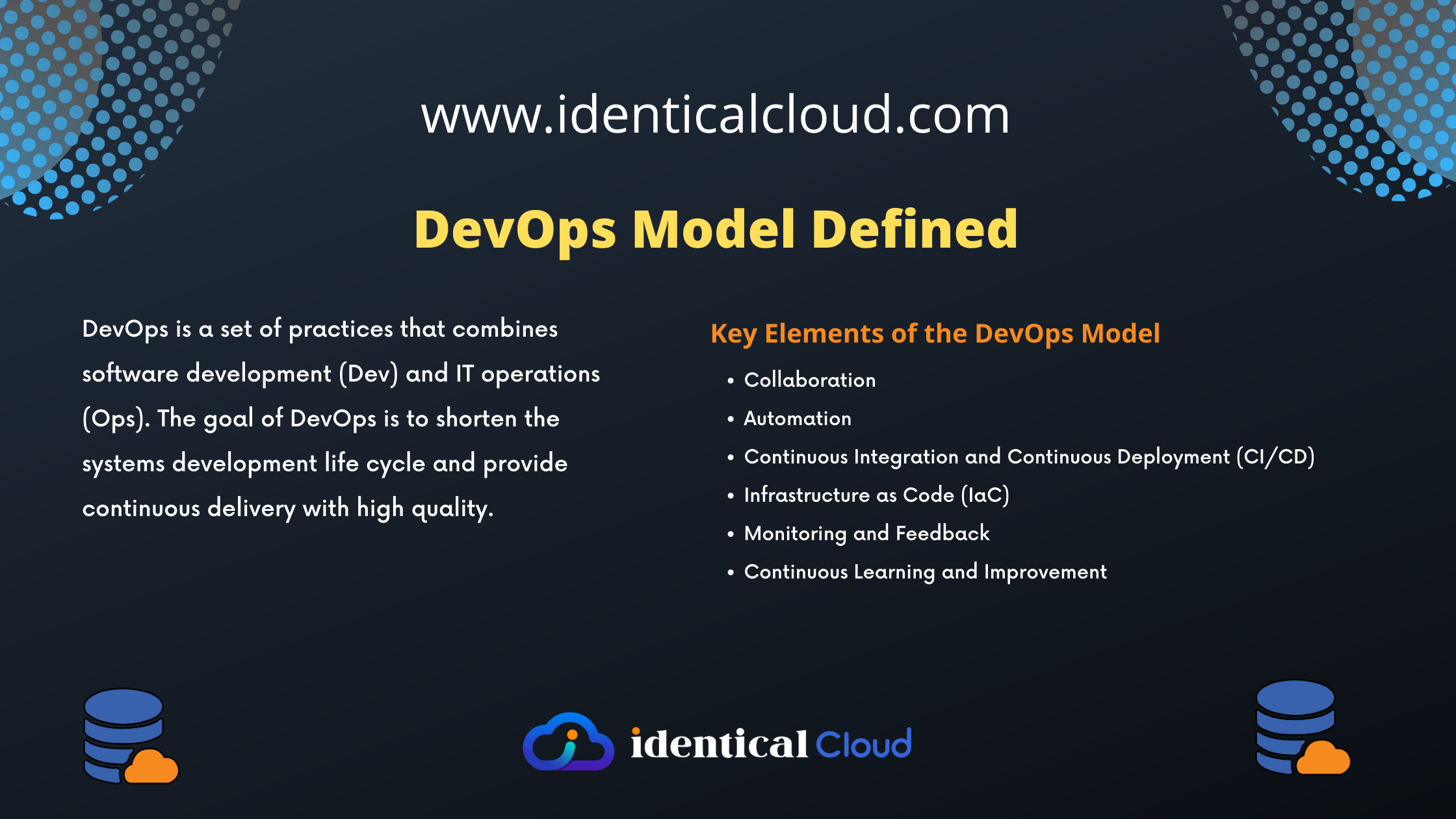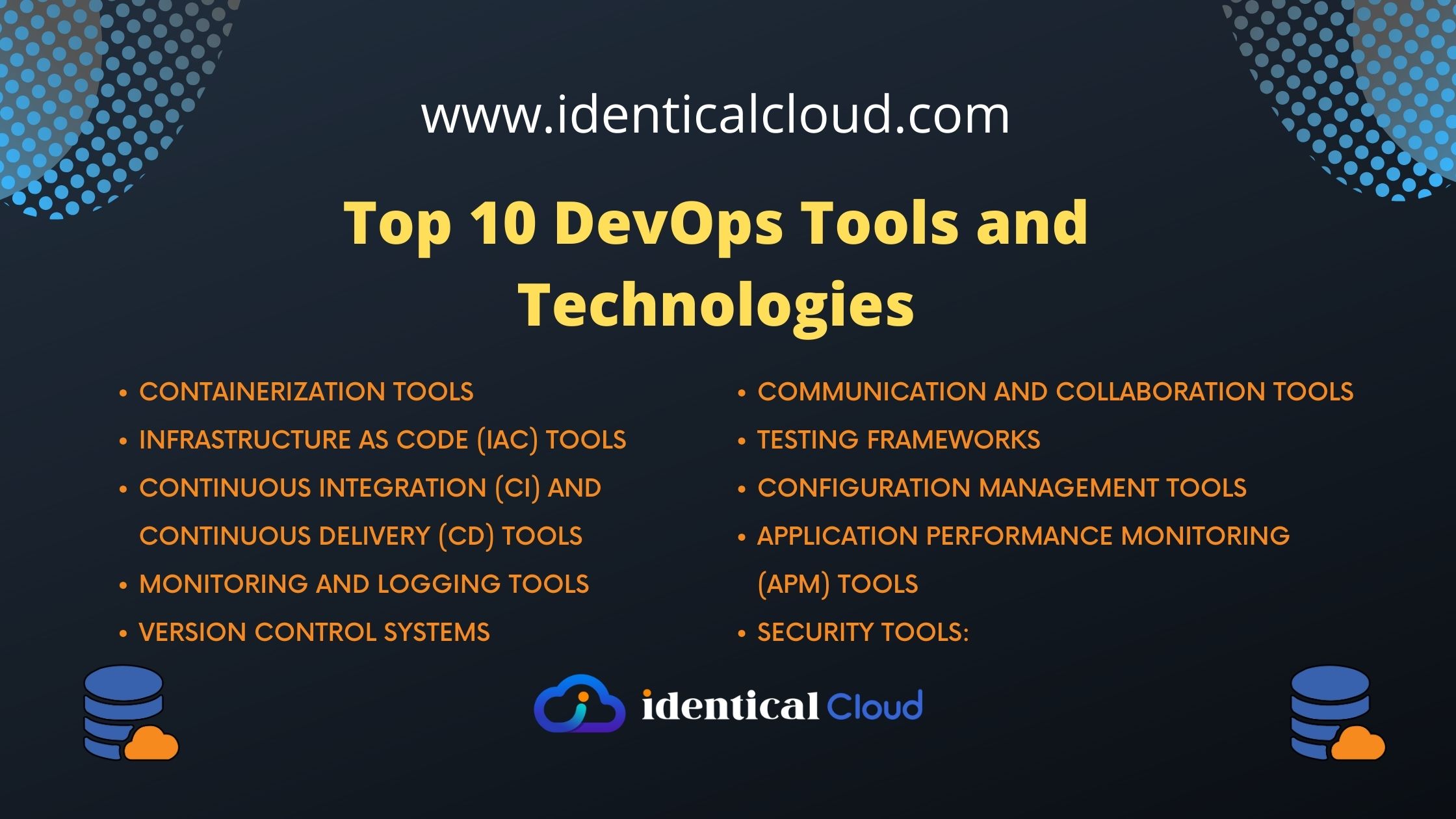
DevOps Model Defined
DevOps Model Defined
DevOps is a set of practices that combines software development (Dev) and IT operations (Ops). The goal of DevOps is to shorten the systems development life cycle and provide continuous delivery with high quality.
The DevOps model is an approach to software development and IT operations that emphasizes collaboration, communication, and integration between development teams and operations teams. It aims to streamline and automate the software delivery process, ensuring faster and more reliable deployment of applications.
DevOps teams are typically responsible for the entire software development lifecycle, from conception to deployment and maintenance. This includes tasks such as:
- Coding
- Testing
- Deployment
- Monitoring
- Troubleshooting
DevOps teams use a variety of tools and technologies to automate tasks and improve communication between developers and operations teams. Some of the most commonly used DevOps tools include:
- Version control systems
- Continuous integration and continuous delivery (CI/CD) tools
- Monitoring tools
- Communication tools
DevOps is a relatively new approach to software development, but it has quickly gained popularity in recent years. The benefits of DevOps include:
- Increased speed and agility
- Improved quality
- Reduced costs
- Increased customer satisfaction
If you are looking for ways to improve your software development process, DevOps is a good option to consider.
Key Elements of the DevOps Model:
- Collaboration: DevOps encourages close collaboration between development teams, operations teams, and other stakeholders involved in the software development lifecycle. This collaboration helps to foster shared goals, increase transparency, and enable the exchange of knowledge and expertise.
- Automation: Automation plays a crucial role in DevOps. It involves automating various stages of the software delivery process, including build, test, deployment, and monitoring. By automating repetitive and manual tasks, organizations can achieve faster and more consistent software releases while reducing the risk of human error.
- Continuous Integration and Continuous Deployment (CI/CD): DevOps promotes the practice of continuous integration and continuous deployment, where developers frequently integrate their code changes into a shared repository and automate the deployment of applications. This allows for faster feedback loops, quicker identification and resolution of issues, and more rapid delivery of new features and updates.
- Infrastructure as Code (IaC): Infrastructure as Code is a practice where infrastructure and configuration management are treated as code. This approach enables teams to define and manage infrastructure resources (servers, networks, databases, etc.) using version-controlled scripts or declarative configuration files. It facilitates consistency, scalability, and reproducibility of infrastructure deployments.
- Monitoring and Feedback: DevOps emphasizes the importance of monitoring applications and infrastructure in real-time. By collecting and analyzing data on performance, availability, and user experience, organizations can gain insights to optimize their systems, proactively identify issues, and provide feedback loops for continuous improvement.
- Continuous Learning and Improvement: DevOps encourages a culture of continuous learning and improvement. It promotes the sharing of knowledge, embracing feedback, and iterating on processes and practices. This iterative approach allows teams to adapt and evolve their workflows, tools, and strategies over time, driving continuous improvement in software delivery and operations.
Here are some of the key principles of DevOps:
- Communication and collaboration: DevOps teams are built on communication and collaboration between developers and operations teams. This ensures that everyone is working towards the same goals and that there is no miscommunication between the two teams.
- Automation: DevOps teams use automation to streamline their processes and improve efficiency. This includes automating tasks such as testing, deployment, and monitoring.
- Continuous delivery: DevOps teams release software continuously and frequently. This allows them to quickly identify and fix bugs and to get new features to users faster.
- Monitoring: DevOps teams monitor their systems closely to ensure that they are running smoothly. This allows them to identify and fix problems early on.
- Culture: DevOps is not just about tools and processes. It is also about a culture of collaboration, communication, and continuous improvement.
If you are looking to adopt a DevOps approach, there are a few things you need to do:
- Get buy-in from all stakeholders: DevOps requires a cultural shift, so it is important to get buy-in from all stakeholders, including developers, operations teams, and management.
- Invest in the right tools and technologies: There are a number of tools and technologies that can help you implement DevOps. Make sure you invest in the right tools for your needs.
- Educate your team: DevOps is a new approach, so it is important to educate your team on the principles and practices of DevOps.
- Start small: Don’t try to implement DevOps all at once. Start with a few small projects and gradually expand your efforts over time.
- Be patient: It takes time to implement DevOps successfully. Don’t expect to see results overnight.
Benefits of the DevOps Model:
- Increased collaboration and communication between teams.
- Faster and more frequent software releases.
- Improved deployment reliability and reduced deployment failures.
- Enhanced software quality and stability.
- Efficient use of resources and infrastructure.
- Faster time to market for new features and innovations.
- Better alignment of development and operations goals and objectives.
- Increased overall business agility and competitiveness.
DevOps is a complex and ever-evolving field, but it can be a valuable tool for any organization that wants to improve its software development process. If you are looking for ways to speed up your development process, improve your quality, and reduce your costs, DevOps is a good option to consider.







